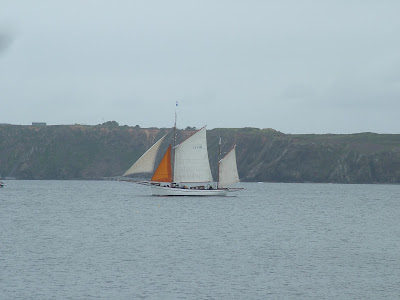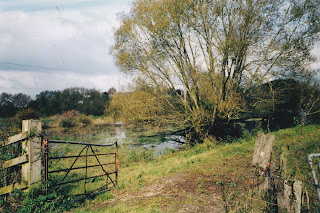Shanties - stories from the sea
You may have noticed that the old working songs of the age of sail are enjoying a bit of a revival at the moment thanks to Tik Tok. Groups performing shanties at festivals, in pubs and on the harbour side are not unusual or new but at the moment their popularity has rocketed as they have been in the spot light on social media.
 |
| A group performing at Cameret, France at the festival of the sea |
Clippers and Packets of the 18th century relied on manual labour for all the heavy work. Groups of men would need to work together under the guidance of a leader or chanty man.
The origins of the word shanty (or chanty) are uncertain but some people believe that it comes from the French verb chanter, to sing. Others believe that the word was related to Gregorian chants. It was certainly recognised that a good chanty man could motivate his group to work together at the right speed and make the boat more efficient meaning better trading for the company it belonged to. They were however chosen for their seamanship abilities not their ability to sing.
 | |
| A pontoon full of tall ships |
There are three main types of shanty.
1. The short-haul songs were simple and worked well when only a few pulls were needed to complete a job.
2. Halyard shanties have a pull and relax rhythm and were used for hoisting the sails. Blow the man down and What shall we do with the Drunken sailor are good examples of this where all the group would pull on the same beat with the speed of the song varied by the shanty man to suit the task.
3. Capstan shanties were used for jobs such as hoisting the anchor where synchronised footsteps were needed to turn the capstan. A-roving and Farewell and Adieu to you, Ladies of Spain are both well suited to this repetitive rhythm.
 |
| Replica of the Matthew. Bristol, England |
Most shanties were in the English language and relied on a call and
response rhythm. No instruments were involved originally, it was purely acoustic as all hands would be using their hands to do the task that was, well, at hand (!).
The length of the shanty could be varied by improvising verses. They are loosely based on the sailors experiences and desires to form the narrative and therefore many are about heading home, love, exploring, whaling, fear and other things that were part of the sailors everyday life - or that they wished for. It was a form of story telling and involved lots of salty language and ribald tales.
 |
| Sailing boat in full sail |
Story telling is how we pass our lives on. Many stories come from the sea in song form such as the shanties but also in poetry and in novels. The challenges of being on the sea and the exploration of new lands inspires many to share their tales. In lock down the world over many people are looking for escape from the constantly doom laden news and its perhaps not surprising that rhythmical tales of daring-do, adventure and escaping to sea have found a spot in the sun for now.
 |
| The ancient mariner. Watchet, England |





Comments
Post a Comment